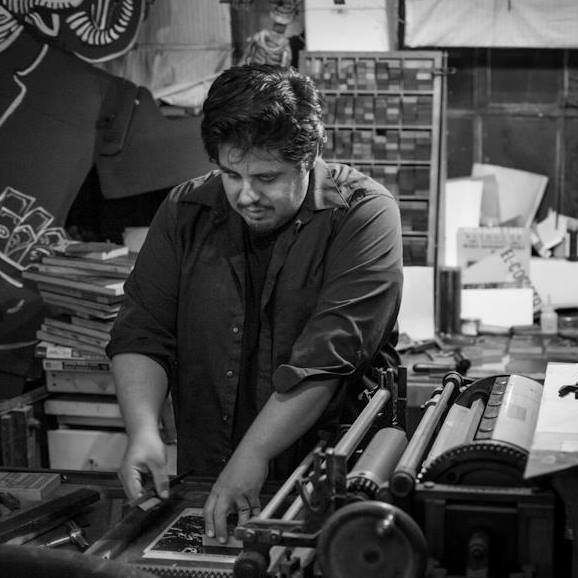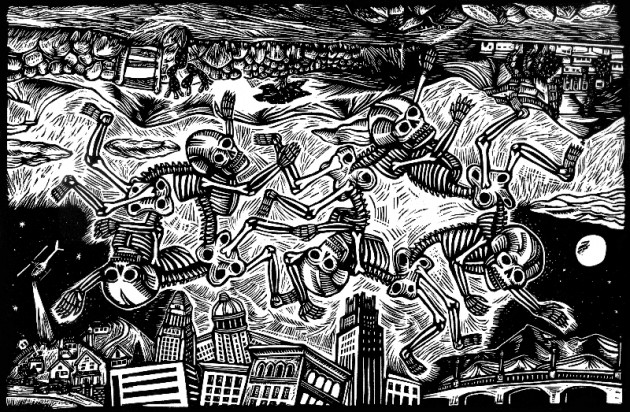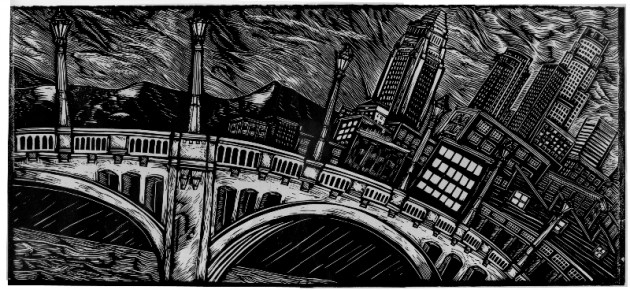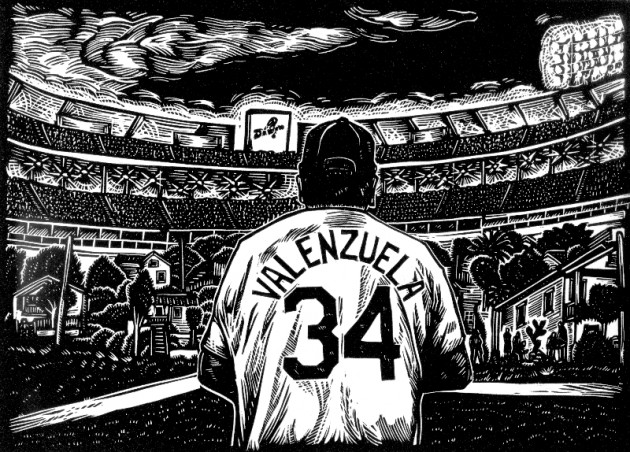
One of the greatest parties of the year in L.A. is approaching and we can’t wait to shake our heads and dance our hearts out with Bomba Estéreo, Mexico’s Little Jesus, and Uruguayans Santé Les Amis. You’re right, we are talking about Santa Fe: the new festival presented by Goldenvoice and LifeBoxset that will take part on June 5th, 6th & 7th in L.A.
Teen Flirt: Inside the Mexican master of the electronic underground
In case you are out of the loop, this project will be a weekend of music and art in various venues across Los Angeles with shows from artists like Teen Flirt, Little People and previously mentioned Bomba Estéreo. Saturday the 6th will be an especially amazing day, in which the Colombian band will be joined by Little Jesus, Santé Les Amis and famous visual artist and printmaker Daniel González who will be doing a special project only for the festival.
We got the opportunity to chat with Daniel prior to his big collaboration and he told us a lot about his art, the way music influences his aesthetic and his approach to printmaking and culture. Check out the interview below and start getting pumped up for next weekend. See you there.
LIFEBOXSET: Why art? Tell us a little bit about your beginnings in printmaking and “Chicano art”.
DANIEL GONZÁLEZ: I began making art as an activity to distract myself. In grade school, I was the one that could draw comic book heroes and cartoon characters the best. I enrolled at the California College of the Arts and I was exposed to printmaking and the work of José Guadalupe Posada. I volunteered at San Francisco Center for the Book and Mission Cultural Center where I learned more about printmaking and created my first editions. When I returned to Los Angeles, I continued printmaking through Self Help Graphics and established my own studio.

L: Do you think Chicano/Mexican art has the same space and exposure as other artistic expressions in L.A.?
D.G: I think art by all people of color especially Black and Latino artists struggle for exposure within the art world. They definitely do not inhabit the same space and gain the same exposure. Unfortunately, institutions and major galleries still do not represent the cultural life of the city. They still do not see the value in artworks in these communities and tend to cater to other interests. The poet Eduardo Galeano described this outlook best, “The nobodies: […] Who do not create art, but handicrafts. Who do not have culture, but folklore.”
L: Your pieces can be quite critical, especially when talking about the social situation in the US. What other subjects are you looking to explore in your art?
D.G: My prints reflect my interests and my experience as a person made up of two very distinct experiences. My childhood was shared between Los Angeles’ Eastside and the small farms my mother and father grew up in Zacatecas. I spoke and learned to read in Spanish before going into school and learning English. I experienced the solitude and poverty of the Mexican countryside and the street culture of Boyle Heights. These experiences stand in contrast to each other and are in constant conflict. I attempt to record these experiences in my work rather than continue to use the same tired cultural motifs.

L: Do you think your art is a conduit that brings you closer to the Mexican community in the US and those living in Mexico? How so?
D.G: I’ve always maintained a strong relationship with Mexico. I travel there often to visit family and have had the good fortune of exhibiting and lecturing there. My experience isn’t unique. There are many people that have grown up dealing with the same issues of identity and resistance. I have the ability to talk about these experiences through my art and maintain a strong dialogue with artists in Mexico and the US, which I carry with me when I travel.
L: If you could choose one piece from your portfolio to define your style as an artist, which one would you pick? Why?
D.G: My work is always evolving and changing so it’s impossible to choose one.
L: What lies behind a project like Self Help Graphics & Art?
D.G: Behind Self Help Graphics & Art are many dedicated people that are trying to bring art and creativity to a community that doesn’t have access to the facilities to create it or the opportunity to experience it. I’m very proud to be able to work and collaborate with Self Help Graphics & Art.

L: What other projects are you currently working on?
D.G: Currently, I’m working on building relationships with printmakers and their workshops in Mexico and the US in order to build new relationships and better dialogue between them. This summer I will be an artist in residence at Espacio Centro in Oaxaca. I will be lecturing, have an exhibit, and hold a workshop.
L: We know Joel has worked with labels like Epitaph Records. Would you say music has been/is a big influence in your art?
D.G: Music has always been present in my life. I like listening to many types and admire musicians very much. Many of my friends are musicians and I like to make the time to listen to them play live. Music feeds my creativity and as an integral part of my creative process.
L: What is your favorite collaboration (either yours or any other artist’s) between visual artists and the music industry?
D.G: Mexico at the moment is going through an extremely a very dark period in its history. The tipping point was when 43 students from Ayotzinapa disappeared. Evidence has implicated the government at the local and federal level. The Mexican people have had enough of the rampant violence that has been ravaging its citizens and have taken to the streets to protest. Over one hundred years ago, Mexico found itself in a similar situation. The Casa del Hijo del Ahuizote was the headquarters in the 1900s of the Partido Liberal Mexicano and was being directed by brothers Enrique and Ricardo Flores-Magon. It used to print broadsides and newspapers denouncing the dictatorship of the Porfirio Diaz regime. As a result of their political activity the Flores Magon brothers were exiled to the US where they continued to print and smuggle their newspaper into Mexico. After lying dormant, the house has printed its first issue of El Hjio del Auizote with a message of transnational solidarity through image and prose with the support of Diego Flores Magon, great grandson of Enrique Flores-Magon. I was able to coordinate a direct message of solidarity to Mexico from the US through a broadside that was distributed during the December 1st and 6th protests in Mexico City.



